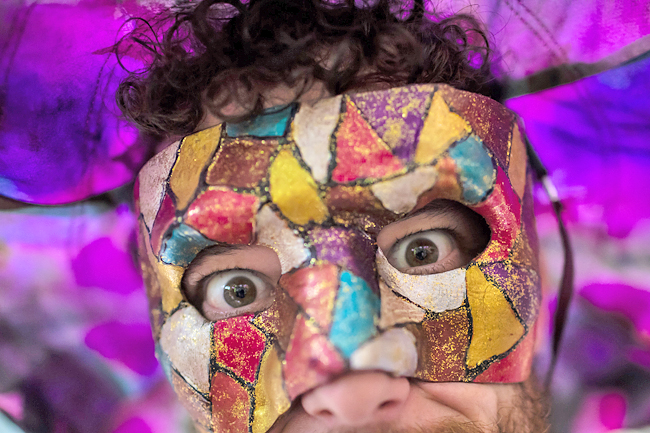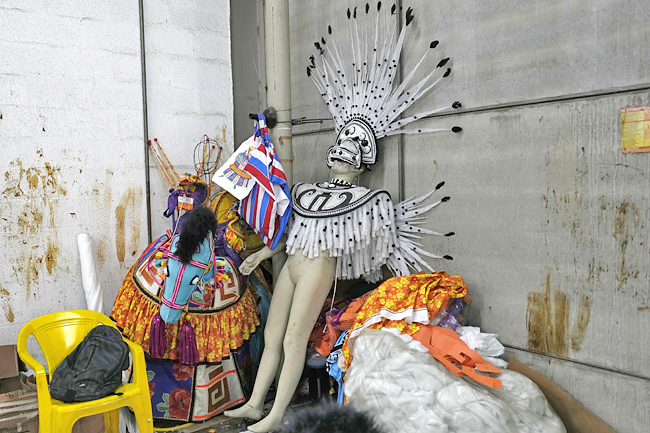Maurixio Savarese & David Biller
RIO DE JANEIRO (AP) – Brazil’s Carnival is back.
Glittery and outrageous costumes were prepared again. Samba songs were ringing out ‘til dawn at Rio de Janeiro’s sold-out parade grounds. Hundreds of raucous, roaming parties were flooding the streets. And working-class communities were buoyed, emotionally and economically, by the renewed revelry.
The COVID-19 pandemic last year prompted Rio to delay Carnival by two months, and watered down some of the fun, which was attended mostly by locals. Brazil’s federal government expects 46 million people to join the festivities that officially began last Friday and run through tomorrow. That includes visitors to cities that make Carnival a world-famous bash, especially Rio but also Salvador, Recife and metropolitan Sao Paulo, which recently emerged as a hotspot.
These cities have already begun letting loose.
Many Brazilian mayors, including Rio’s, were marking the start of the celebrations on Friday by symbolically handing the keys to their cities to their Carnival Kings. And the first street parties of the Carnival weekend kicked off, with revellers donning costumes.
“We’ve waited for so long, we deserve this catharsis,” Thiago Varella, a 38-year-old engineer wearing a Hawaiian shirt drenched by the rain, said at a bash in Sao Paulo.
Most tourists were eager to go to the street parties, known as ‘blocos’. Rio permitted over 600 of them, and there are more unsanctioned blocos. The biggest blocos lure millions to the streets, including one bloco that plays Beatles songs with a Carnival rhythm for a crowd of hundreds of thousands. Such major blocos were called off last year.





“We want to see the colours, the people and ourselves enjoying Carnival,” Chilean tourist Sofia Umaña, 28, said near Copacabana beach.
The premier spectacle is at the Sambadrome. Top samba schools, which are based in Rio’s more working-class neighbourhoods, spend millions on hour-long parades with elaborate floats and costumes, said president of Rio’s league of samba schools Jorge Perlingeiro.
“What’s good and beautiful costs a lot; Carnival materials are expensive,” Perlingeiro said in an interview in his office beside the samba schools’ warehouses.
“It’s such an important party… It’s a party of culture, happiness, entertainment, leisure and, primarily, its commercial and social side.”
He added that this year’s Carnival will smash records at the Sambadrome, where some 100,000 staff and spectators are expected each day in the sold-out venue, plus 18,000 paraders. While President Luiz Inácio Lula da Silva is not expected to be among them, his wife Rosângela da Silva said she will be at the parade.
The First Lady’s attendance signals a shift from the administration of former president Jair Bolsonaro, who kept his distance from the nation’s marquee cultural event.
Nearly 700,000 Brazilians died in the pandemic, the world’s second-highest national total, after the United States (US), and many blamed Bolsonaro’s response, weakening the bid for reelection that he ultimately lost. Many at this year’s street parties are celebrating not just the return of Carnival, but also Bolsonaro’s defeat.
That was the case at the Heaven on Earth street party in Rio’s bohemian Santa Teresa neighbourhood on February 11. Musicians pounded their drums as some revellers climbed fences to watch the scene from above the pulsing throng. Anilson Costa, a stilt-walker, already had a prime view from his elevated perch. Covered in flowers and brightly coloured pom-poms, he poured a watering can labelled “LOVE” over people dancing below him.
“Seeing this crowd today is a dream, it’s very magical,” said Costa. “This is the post-pandemic Carnival, the Carnival of democracy, the Carnival of rebirth.”
This year shares some of the spirit of the 1919 edition, which took place right after Spanish influenza killed tens of thousands of Brazilians, but was no longer a significant threat. WWI had just ended, too, and people were eager to unburden themselves, said author of a book about that year’s celebration David Butter.
“There were so many people in Rio’s city centre for Carnival that the whole region ran out of water within hours,” said Butter.
Carnival’s cancellation in 2021 and its lower-key version last year pummelled an industry that is a nearly year-long source of jobs for carpenters, welders, sculptors, electricians, dancers, choreographers and everyone else involved in bringing parades to the public. As such, Carnival’s full-fledged return is a shot in the arm for local economies.
“Yesterday, I went to sleep at 3am. Today, I’ll leave earlier, because I’ve lost my voice,” said seamstress Luciene Moreira, 60, as she sewed a yellow costume in samba school Salgueiro’s warehouse. “You have to sleep later one day, earlier the next; otherwise, the body can’t handle it. But it is very enjoyable!”
Rio expects some BRL5 billion (about USD1 billion) in revenue at its hotels and restaurants, the president of the city’s tourism agency, Ronnie Costa, told the AP. Rio’s hotels are at 85 per cent capacity, according to Brazil’s hotel association, which expects last-minute deals to bring that figure near to its max. Small businesses are benefitting, too.
“Carnival is beautiful, people are buying, thank goodness my employees are paid up to date,” said Jorge Francisco, who sells sequined and sparkled Carnival accoutrements at his shop in downtown Rio. “For me, this is an immense joy, everyone smiling and wanting. That’s how Carnival is.”







